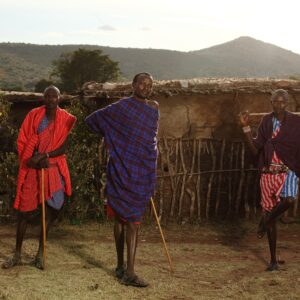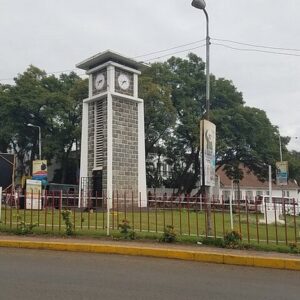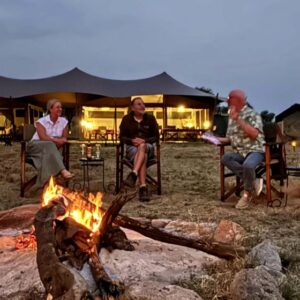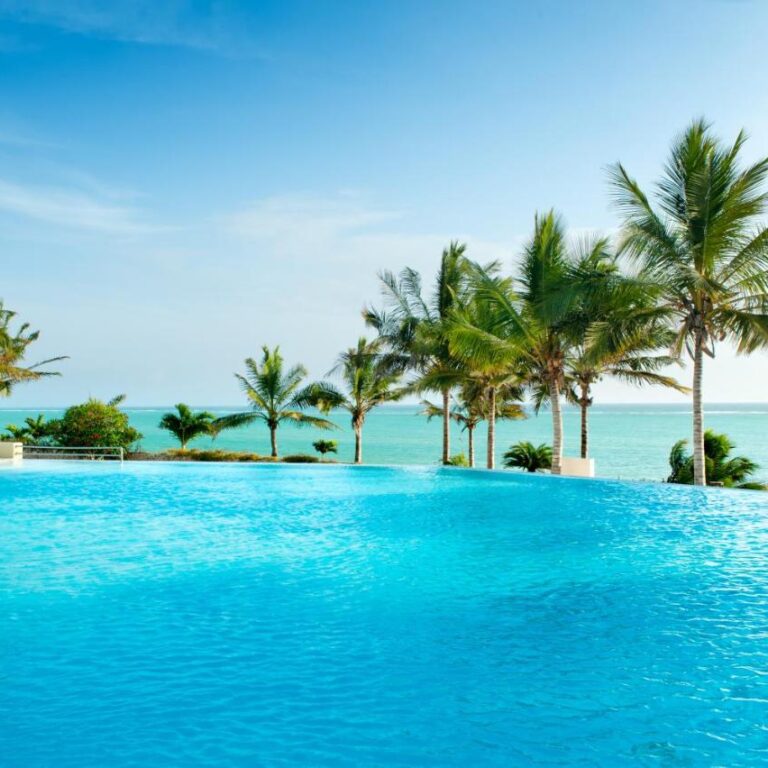Your Kilimanjaro daypack should prioritize items needed for daily trekking and varying weather conditions, focusing on essentials like weather protection, hydration, snacks, and personal care, while larger gear is carried by porters in a duffle bag. Key items to include are sunglasses, hats (sun and warm), layers of clothing (waterproof and insulating), trekking poles, ample water, energy snacks, sunscreen, lip balm, hand sanitizer, basic first-aid, and a camera. Climbing Mount Kilimanjaro is a once-in-a-lifetime adventure, attracting trekkers from all over the world. With its stunning landscapes, diverse ecosystems, and the challenge of reaching the “Roof of Africa,” proper preparation is crucial for a successful summit.
One of the essential aspects of preparation is knowing what to carry in your daypack. This comprehensive guide will help you pack smartly for your Kilimanjaro trek, ensuring you have everything you need to make your climb safe, comfortable, and enjoyable. Mount Kilimanjaro is located in Tanzania, near the border with Kenya. It is the highest peak in Africa, standing at 5,895 meters (19,341 feet) above sea level. Kilimanjaro is a dormant volcano with three volcanic cones: Kibo, Mawenzi, and Shira.
The climate on Kilimanjaro varies greatly with altitude. The base of the mountain is in a tropical zone, but as you ascend, the temperature drops significantly. Climbers experience various climate zones: rainforest, heath, moorland, alpine desert, and arctic summit.
Features and Specifications of the Kilimanjaro Daypack
Size: A daypack for Kilimanjaro should be between 20 to 30 liters in size which is large enough to carry the necessary gear for the day. But not so large that it is cumbersome or uncomfortable to carry.
Weight: A daypack for Kilimanjaro should be lightweight, as you will be carrying it for several hours each day. Look for a model that is made from lightweight materials and does not add unnecessary weight to your load.
Design: A daypack for Kilimanjaro should have a comfortable and supportive design. Padded shoulder straps and a hip belt that helps distribute the weight of the pack evenly across your body. The pack should also be adjustable to fit your body size and shape.
Compartments: A daypack for Kilimanjaro should have multiple compartments and pockets to help you organize your gear and keep it easily accessible. Look for a model with a main compartment, front pocket, and side pockets for water bottles and snacks.
Durability: A daypack for Kilimanjaro should be durable and able to withstand the harsh conditions of the mountain. High-quality materials, with reinforced seams and zippers.
Why Do You Need A Kilimanjaro Daypack?
A Kilimanjaro daypack is essential for carrying daily necessities like water, snacks, layers, and personal items during your climb. It ensures easy access to these items, enhancing comfort and safety. The right daypack balances weight and storage, making your trek more enjoyable and efficient.
How To Choose The Right Daypack?
To choose the right daypack, consider its capacity, fit, and features. Ensure it holds essentials like water, snacks, and layers. Look for a comfortable fit with adjustable straps and good ventilation. Useful features include multiple compartments, hydration compatibility, and durable materials. Prioritize comfort and practicality to enhance your hiking experience.
Essential Items to Pack for Your Kilimanjaro Daypack
Embarking on a trek up Mount Kilimanjaro is a thrilling adventure that requires meticulous preparation. Among the many aspects of planning your climb, packing the right items in your daypack is crucial for a successful and enjoyable experience. Here, we provide a comprehensive guide on the basic essentials to carry in your daypack on Kilimanjaro. This guide ensures you are well-prepared to face the challenges of the mountain while enjoying its breathtaking beauty. What to Carry in Your Daypack on Kilimanjaro?
1. Water Bottle or Hydration System
Staying hydrated is paramount when climbing Kilimanjaro. The high altitudes and strenuous activity can quickly lead to dehydration. We recommend carrying a hydration system, such as a CamelBak, which allows you to drink water without having to stop and take out a bottle. If you prefer traditional water bottles, ensure you have at least two liters of water. Consider insulated bottles to prevent your water from freezing at higher altitudes.
2. Snacks and Food
Keeping your energy levels up is essential during the climb. Pack high-energy snacks and food that are lightweight and easy to carry. Energy bars, nuts, dried fruits, and trail mix are excellent choices. Additionally, bring some comfort snacks like chocolate or candy for a morale boost during tough sections of the trek. It’s important to have a mix of carbohydrates, proteins, and fats to sustain your energy levels throughout the day.
3. Sunscreen
The sun’s rays are much stronger at higher altitudes, and the UV exposure can be intense. Protecting your skin with sunscreen is crucial to avoid painful sunburns and long-term skin damage. Use a broad-spectrum sunscreen with at least SPF 30, and reapply it every two hours, especially after sweating. Don’t forget to apply sunscreen to often-missed areas such as the back of your neck, ears, and hands.
4. Clothing and Rain Gear
Kilimanjaro’s weather is notoriously unpredictable. To stay dry and comfortable, pack reliable rain gear. A waterproof jacket and pants are essential to protect you from sudden downpours. Look for breathable materials to prevent overheating while trekking. Additionally, pack a waterproof cover for your daypack to keep your belongings dry. Layering is key; a moisture-wicking base layer, an insulating mid-layer, and a waterproof outer layer provide the best protection.
- Rain jacket (fully waterproof with hood)
- Rain pants (full-length side zippers work well to take on and off quickly)
- Fleece insulating layer
- Softshell breathable windbreaker
- (Optional) down jacket to keep you warm when you stop for lunch
- Sun hat
- Warm hat (such as a beanie) that covers your ears
- Gloves
- Sunglasses (very important, the sun’s rays are harsh in the thinner atmosphere)
- (Optional) knee supports
5. Headlamp or Flashlight
A headlamp or flashlight is indispensable for early morning starts, late-night preparations, and any emergency situations that might arise. Opt for a headlamp to keep your hands free. Ensure it has fresh batteries, and carry spare ones as a backup. Modern LED headlamps are lightweight, have long battery life, and provide ample illumination.
6. First-Aid Kit
A well-stocked first-aid kit is a must-have for any trek. Your kit should include adhesive bandages, antiseptic wipes, blister treatments, pain relievers, and any personal medications you might need. Additionally, consider packing altitude sickness medication, as the high altitudes can cause symptoms such as headaches and nausea. Knowing basic first-aid procedures can be invaluable in case of minor injuries or ailments.
7. Camera
Capturing the stunning landscapes and unforgettable moments on Kilimanjaro is something you’ll cherish forever. Carrying a camera allows you to document your journey. Choose a lightweight and durable camera that can withstand the harsh conditions. If you prefer using your smartphone, ensure it has a good camera and pack a protective case. Spare batteries or a portable charger can be very useful to keep your devices powered throughout the trek.
Some Recommended Kilimanjaro Daypacks
- Osprey Talon 22: Lightweight and versatile, the Osprey Talon 22 features an adjustable harness and ventilated back panel, making it ideal for long treks.
- Deuter Speed Lite 20: Compact and durable, the Deuter Speed Lite 20 offers a sleek design with ample storage and comfortable padding.
- Gregory Citro 24: With its integrated hydration system and multiple pockets, the Gregory Citro 24 ensures easy access to essentials.
Top Tips for Packing Kilimanjaro Daypacks
- Packing your Kilimanjaro daypack efficiently ensures a comfortable trek.
- Distribute weight evenly to maintain balance, placing heavier items like water bottles close to your back.
- Use compartments to organize essentials such as snacks, first-aid kit, and rain gear for easy access.
- Keep frequently used items like a headlamp and sunscreen in external pockets.
- Protect electronics in waterproof bags.
- Finally, pack an extra layer of clothing for varying weather conditions.
- Prioritize accessibility and balance for a hassle-free climb.
Key Features of Modern-Day Technical Kilimanjaro Daypacks
- Modern technical Kilimanjaro daypacks offer essential features for a successful trek.
- They include adjustable harness systems for a custom fit, ventilated back panels for breathability, and multiple compartments for organized storage.
- Hydration system compatibility ensures easy access to water, while durable, lightweight materials enhance comfort and endurance.
- Additional features like rain covers, gear loops, and easy-access pockets for essentials such as snacks and first-aid kits ensure preparedness for any condition.
- These daypacks blend functionality with ergonomic design to support challenging climbs.
What Do I Need to Carry on Mount Kilimanjaro?
What to carry in your daypack on Kilimanjaro? Gloves. Rainwear. Sunglasses. First Aid Kit. Sleeping Bag. Sunscreen. Hats. Warm Hat. Toilet paper. Daypack. Fleece jacket. Hand Sanitizer. Hiking boots. Lip Balm. Socks. Trekking Pants. Underwear. Balaclava. Rain Pant. Shirts. Snacks. Spare. camera battery. Trekking poles. Assorted bags.
How big should your day pack be for Kilimanjaro?
A medium-sized day pack, about 30 to 35 liters, is the ideal Kilimanjaro Daypack Size. You can also use a smaller capacity of 20 or 25 liters daypack. But, it would require strategic packing every time you add or remove something.
What Gear Goes into My Kilimanjaro Daypack?
Essential gear for your Kilimanjaro daypack includes a hydration system, snacks, sunscreen, rain gear, a headlamp, a first-aid kit, and a camera. Kilimanjaro Daypack – Essential Gear For The Climb. Ensure you also pack layers of clothing for varying weather, personal identification, and navigation tools for a safe and enjoyable trek.
How Should I Pack My Kilimanjaro Daypack?
Pack your daypack by placing heavier items like water bottles close to your back for balance. Use compartments to organize essentials such as snacks, a first-aid kit, and rain gear. Keep frequently used items like sunscreen and a headlamp in external pockets. Ensure easy access and distribute weight evenly for a comfortable trek.
Do I Need a Rain Cover for My Daypack on Kilimanjaro?
Yes, a rain cover for your daypack is essential on Kilimanjaro. Sudden rain showers are common, and a rain cover protects your belongings from getting wet, ensuring they remain dry and accessible throughout your trek.
What snacks should I pack for Mount Kilimanjaro?
Pack high-energy snacks such as nuts, energy bars, and dried fruits. These will help maintain your energy levels throughout the climb.
What kind of daypack should I use for climbing Kilimanjaro?
How big should your day pack be for Kilimanjaro? Choose a lightweight, comfortable daypack with a capacity of 20-30 liters. It should have multiple compartments for organizing your gear and be durable enough to withstand the mountain conditions.
What type of clothing is necessary for Kilimanjaro?
Kilimanjaro Daypack – Day Backpack Guidance For Kilimanjaro. Layering is key. Bring moisture-wicking base layers, insulating layers like fleece or down jackets, and a waterproof and windproof outer shell. Don’t forget a sun hat, beanie, gloves, and sturdy, waterproof hiking boots.
How do you pack a Mount Kilimanjaro daypack?
The key to packing for comfort is considering weight distribution. To ensure weight is distributed evenly pack heavier items in the bottom half of the bag whilst sitting them as close to the back of the pack as possible (the part that sits closest to your back). The remaining items should be packed around this.
Many hikers prefer a daypack with at least one or two separate top or front pockets for smaller items such as car keys, sunglasses, and a small camera, and mesh side pockets for items like a water bottle, insect repellent, or sunblock. Some packs even have zippered pockets on the hipbelt for snacks.
What snacks to take to Kilimanjaro?
The best snacks for Climbing Kilimanjaro are those high in energy and easy to carry. Examples include energy bars, dried fruits, nuts, and chocolate. These snacks provide quick energy boosts and are easy to consume on the go.








